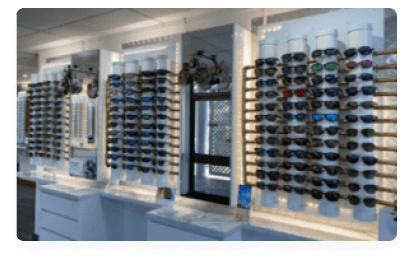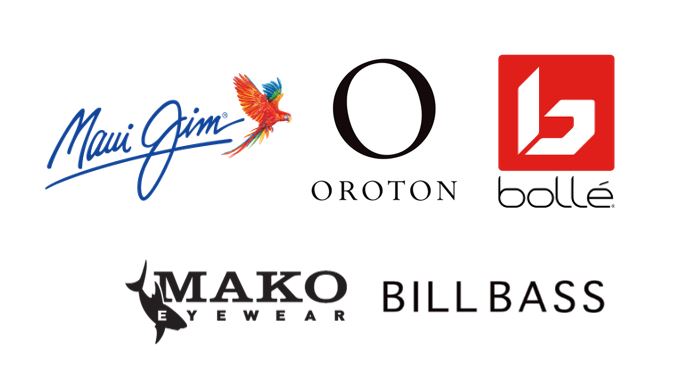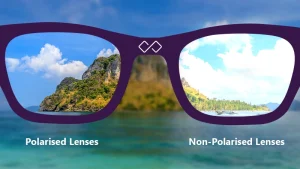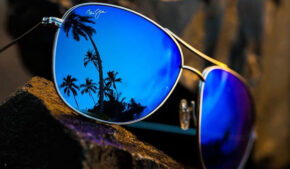Finding the Right Sunglasses
Sunglasses eliminate the discomfort and disabling effects of bright light and protect your eyes against ultraviolet and infrared radiation. Continued sunlight exposure can lead to pterygia, cataracts, and eye/eyelid melanoma. Our trained staff can help you determine your sunglass preference which may be guided by your tolerance bright light and glare, the time of day you are in the sun, your occupational and your recreational activities. We can help you determine your preference for lens colour, mirror coatings, polarisation, wrap around lenses, and side shields along with ensure you purchase well-fitting comfortable fashionable frames.
When Should Sunglasses be Worn?
Sunglasses are designed for outdoor day time wear in bright sunshine or where there is glare. They should be worn when bright sunlight causes watering of the eyes, squinting or excessive blinking. Sunglasses are essential during periods of prolonged exposure to sunlight. Besides visible light, sunlight contains two powerful, invisible forms of radiation; ultraviolet and infrared. Continued exposure to these rays can cause serious eye damage.

Optometrists recommend that people who spend most of their time outside or who work near snow, water or sand should wear sunglasses that filter out both ultraviolet and infrared rays. Because the effects of exposure to UV accumulate over a person’s lifetime, it is important for children as well as adults to wear eye protection. Sunglasses should not be worn at night, particularly while driving. This is because in the dark they can reduce vision to dangerously low levels.
If you feel that you need to wear sunglasses continually for comfort, you should consult your optometrist as you may have an underlying issue.
What to look for in Sunglasses
Making sure the lenses are:
- Meet Australian standards – material, UV protection
- Are large enough for maximum coverage
- Are made with a material that meets your needs – if you’re outdoors avoid glass lenses
- If outdoors near water or snow, consider polarised lenses or a mirror coating
Plastic lenses are generally more impact resistant than glass and lighter in weight. It is best to have a multicoating added to your lenses as plastic lenses do tend to scratch easier. Selecting a sturdy frame is always key so that your lenses are protected.
Sunglass brands we stock include:

Tinting Options
We offer a vast range of sunglass tint options to customising your lenses to suit your preference.
Tinted lenses – With tinted lenses we are able to customise the colour, percentage of darkness and whether you would like a solid tint or gradient tint. The solid tint darkness starts from 12% to the legal limit of 85%. The solid tint is where the lens is fully tinted whereas the gradient tint is darker at the top and becomes lighter towards the bottom of the lens, giving you the ability to see your speedometer clearly.
Polarised lenses – Polarised lenses are effective in combating the glare caused by light reflected from surfaces like roads, glass (windows), and water. Prescription polarised lenses are also available in three colour options: brown, grey, and green. These lenses give wearers clarity and comfort for activities like fishing, driving, golf, tennis etc. to give you the ability to see past reflective light.

Photochromic tinting– Photochromic lenses are a ‘sun sensitive’ lens. They darken from a clear lens to a tinted lens when activated by UV light. This is beneficial for those who frequently change from inside to outside and struggle changing glasses between clear glasses and sunglasses. The photochromic tint does it all. The only downside to this tint is that they don’t fully tint in the car as your windows already have UV blocking technology which prevents UV light from activated the lenses. This technology has evolved rapidly and is now faster changing from light to dark and dark to light than ever. It takes less than 2 minutes to fully tint and go back to clear when inside.
To read about the photochromic tint we offer click HERE.
Reflecting (mirror) coating – A thin metallic coat is combined with a tinted lens to produce a mirrored appearance. They’re designed for wear under intense glare such as reflection from water or snow. Some absorb both UV and Infrared rays. Our Zeiss DuraVision Mirror coatings are available in red, blue, green, sapphire, ruby, bronze, and silver and all come standard with back surface anti-reflective coating and can be applied to both tinted and polarised lenses. Ask our staff about these mirrors and we can show you samples of the colour options.

Sunglass Standards
Sunglass standards became law in Australia on 1 October 1985. Under the standard, sunglasses are divided into three main categories and labelled for the information of consumers.
- General purpose sunglasses are intended to reduce glare in ordinary circumstances and are suitable for everyday use in situations such as driving a car.
- Specific purpose sunglasses are required to meet more stringent standards and are intended for use in activities such as skiing or yachting.
- Fashion spectacles do not provide significant protection against sun glare and are intended for decorative rather than protective purposes.
Some sunglasses may be labelled ‘Not suitable for colour defective persons’ or ‘Not suitable for driving’.
